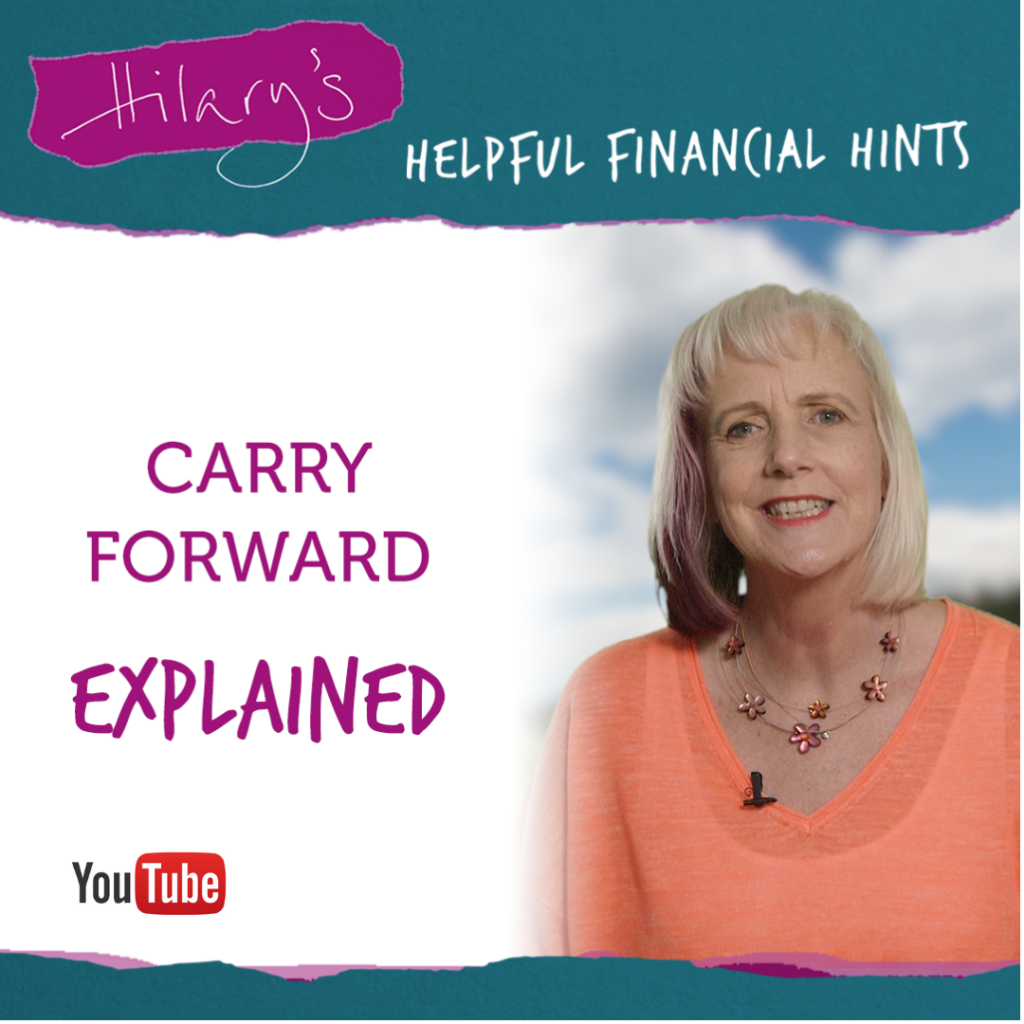Carry forward is a pension contribution tax rule. It allows you to pay pension contributions in excess of the standard annual allowance (£60,000) for the current tax year.
Here are 5 Key Points
- The standard Annual Allowance (i.e. maximum pension contribution) for the current tax year (2023/24) is £60,000. In earlier tax years it was £40,000.
- You have to have an existing pension you’ve contributed to even if you no longer pay into it.
- You can use carry forward for employer/company pension contributions (particularly useful if you’re a controlling director with a profitable business).
- Remember tax relief on personal pension contributions is limited to your earned income.
- You can’t use carry forward if you’ve taken pension benefits since 2015 (there are some exceptions).
When is Carry Forward Useful?
- EXAMPLE 1
-
- You’re a business owner and want to maximise your pension contributions.
- You haven’t paid any contributions for the last 5 years.
- Your company has scope to pay up to £180,000 as a company pension contribution.
- This is £60,000 for 2023/24 and £120,000 for 2022/23, 2021/22 and 2020/21.
-
- EXAMPLE 2
-
- You’re employed, earning more than £60,000 with cash to invest in your pension.
- You can pay a gross contribution of up to 100% of your taxable salary.
- You deduct tax relief and pay net of 20%.
- The provider reclaims the tax relief and adds it to your fund.
- You reclaim any higher rate tax relief via your tax return.
-
Tip 1: Use it or Lose it…
Remember: you must use any unused relief from 2020/21 by 5 April 2024 or lose that year forever.
TIP 2 : If you don’t already have a pension plan…
Consider setting up a pension plan with a small contribution in this tax year. Then, if you don’t have the funds available to use your full annual allowance, you can carry forward to when you (or your company) might have more money available. Otherwise you’ll lose this year’s allowance.
Keep Reading if you Want to go Deeper…
There are strict rules governing how carry forward works and it’s important you stay within them to avoid any nasty tax charges.
How does it Work?
You can carry any unused annual allowance forward to the current tax year from the previous three tax years. But you have to use up your current year’s annual allowance first.
You start by using any unused annual allowance from the earliest year.
You don’t need to have had any relevant UK earnings in the tax years being carried forward from.
What is a ‘Member’ of a registered pension scheme?
You have to have been a ‘member’ of a registered pension scheme at some point during the year being carried forward from. A member includes an active member, a deferred member, a pension credit member or a pensioner member.
You don’t have to have to have made any contributions to the scheme in the year being carried forward from. Also, the new contributions don’t have to be paid into the earlier arrangement.
Can you still use Carry Forward if you’ve taken Benefits?
Possibly not. If you’ve taken pension benefits from 6 April 2015 onwards you could have triggered the money purchase annual allowance.
This restricts your pension contributions to £10,000 in the current tax year (previously £4,000 pa ).
It also means you can’t use carry forward in relation to money purchase funding (ie personal pension plans).
Carry forward and the balance of the full annual allowance remain available in relation to accrual within final salary/defined benefit company pension arrangements.
What happens if you’re on a ‘Higher Income’?
You need to take care if your threshold income for the current 2023/24 tax year is £200,000.
Your Annual Allowance could be subject to tapering, with a maximum reduction of £50,000 taking the annual allowance to just £10,000.
This means you can only carry forward the balance of the tapered annual allowance to future tax years.
Note: as you can probably tell, Tapered Annual Allowance is a bit complex and has a whole article of it’s very own.
Carry Forward and Tax Relief
If you’re carrying forward your unused annual allowance, the usual tax relief rules still apply to any contributions made.
Tax relief on company/employer contributions is subject to the usual ‘wholly and exclusively test’.
Tax relief on your personal contributions is limited to 100% of your relevant UK earnings for the tax year in which the contributions are actually paid (or £3,600 if greater).
Remember you’re carrying forward your unused annual allowance – not unused earnings from earlier years.
Do I have to tell HMRC?
You don’t have to make a claim to HMRC to carry forward any unused Annual Allowance.
As long as you haven’t incurred an annual allowance tax charge, the carry forward details do not need to be shown on your tax return.
We recommend you keep clear records in case your pension savings exceed the annual allowance in a subsequent year.
You will also want to show details of personal contributions made to a personal pension if you’re claiming higher/additional rate tax relief.
More Reading
Company Pension Contributions: Tax Savings for Business Owners
Dividends and Pensions: An Easy Guide for Business Owners






